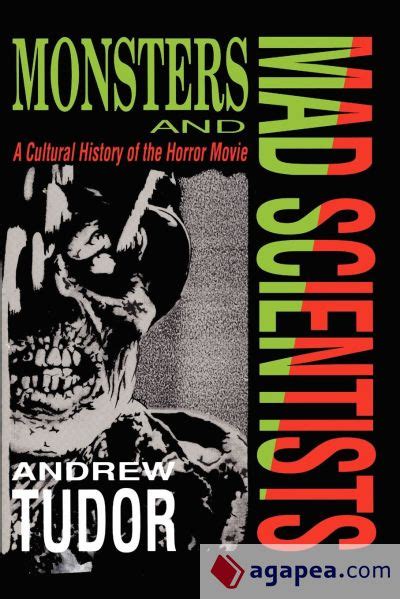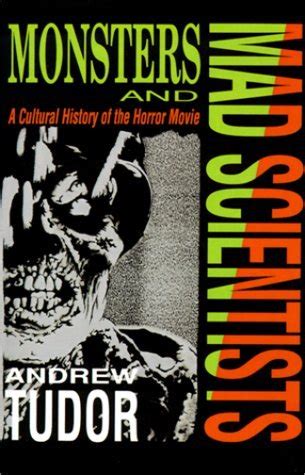andrew tudor 6 fasi del cinema horror | andrew tudor monsters and mad scientists andrew tudor 6 fasi del cinema horror Barbara Creed, Andrew Tudor, Monsters and Mad Scientists: A Cultural History of the Horror Movies, Screen, Volume 31, Issue 2, Summer 1990, Pages 236–242, . Option 1: Use the Intel® Driver & Support Assistant (Recommended) The easiest way to update your Wi-Fi driver and software is to download and install the Intel® Driver & Support Assistant. This tool identifies your adapter and updates your driver to the latest version, if needed. Option 2: Manually Download your Driver
0 · andrew tudor monsters and mad scientists
1 · andrew tudor horror movies pdf
2 · andrew tudor books
Discover Louis Vuitton Drops Flat Half Boot: The Drops flat half boot in high-shine waterproof rubber combines style and practicality. Available in classic black or pale pink, it is embossed with Louis Vuitton's iconic Monogram pattern. To ensure it is completely watertight, this boot is not assembled, but made from a single mold.
A review essay of two important horror book releases from 1989, Joseph Grixii’s Terrors of Uncertainty: The Cultural Contexts of Horror Fiction and Andrew Tudor’s Monsters and Mad Scientists: A Cultural History of the Horror Movie. Barbara Creed, Andrew Tudor, Monsters and Mad Scientists: A Cultural History of the Horror Movies, Screen, Volume 31, Issue 2, Summer 1990, Pages 236–242, .
It is argued that these attempts at posing general explanations of the appeal of horror are, at worst, inappropriately reductive and, at best, insufficiently specific, failing to . Bibliographic information. Title. Monsters and Mad Scientists: A Cultural History of the Horror Movie. Author. Andrew Tudor. Edition. illustrated, reprint. Publisher. Wiley, 1991. The recurrence of the figure of the Antichrist in mainstream horror films is a culturally significant development since its origins in the 1970s. This paper argues that Antichrist films .
Tudor, Andrew 1942- Contents Introduction: horror-movie histories -- Facts, figures and frightful fiends -- Genre history I: 1931-1960 -- Genre history II: 1961-1984 -- Narratives -- Events, .A study of horror movies, which discusses individual movies in detail and seeks to identify the main traditions of the genre, such as the mad scientist, the monster and the psychotic killer, . In this book the author provides a systematic history of the horror movie genre, discussing individual movies in detail, while also drawing out the more general patterns in the . Andrew Tudor. Published 1 June 2004. Psychology. THE RETURN OF THE REPRESSED By far the most common accounts of horror's appeal are grounded in concepts .
This essay responds to these attacks, defending a psychoanalytic approach to horror cinema from objections raised by theorists such as Stephen Prince, Andrew Tudor, .An early study of the phenomenon of horror films, Tudor approaches the question as a cultural historian with a healthy dose of sociology. He classifies films according to various forms of threats: internal, external, dependent, autonomous, supernatural, secular, and then goes through a history of the films released in Britain from the 1930s to 1984.
Research Overview. Always enchanted by the cinema – my first ‘publication’ was a letter to Picturegoer in the mid-50s – I was a pioneer in the development of the sociology of film in Britain, publishing two books in the area in 1974: Theories of Film and Image and Influence: Studies in the Sociology of Film.Combining academic responsibilities with work as film critic for New Society .In claiming that Noel Carroll’s question ‘why horror?’ is too narrow, Andrew Tudor (2002) argues that different audiences make sense of different kinds of horror in different ways (in fact, different kinds of horror film work in different ways). . sider horror cinema historically and culturally in order to determine how the horror . Psychoanalytic theories of film, and of the horror film in particular, have been subject to attack from various quarters. This essay responds to these attacks, defending a psychoanalytic approach to horror cinema from objections raised by theorists such as Stephen Prince, Andrew Tudor, Jonathan Crane, Noël Carroll, and Berys Gaut.
Appunto che parla di come si suddividono le parti nel cinema, del valore delle luci, del suono, le caratteristiche dei personaggi e le sequenze.General Introduction. Part One: Theorising Horror - Introduction 1. Robin Wood, The American Nightmare: Horror in the 70s 2. Noel Caroll, Why Horror? 3. Andrew Tudor, Why Horror: The Peculiar Pleasures of a Popular Genre Part Two: Gender, Sexuality and the Horror Film - Introduction 4. Linda Williams, When the Woman Looks 5. Barbara Creed, Horror and the .

This text outlines what sociologists need to know of the nature of communication and of mass culture, while also looking in some empirical detail at the workings of the Hollywood community and the psychology of the star system. It explores trends such as attempts to adapt semiology and psycholinguistics to our understanding of film ‘language’, using them to develop . By Andrew Tudor. Edition 1st Edition. First Published 1974. eBook Published 8 December 2013. Pub. Location London. . of the relation between cinema and society through detailed analysis of the relation between the German silent cinema and its social context and extensive discussion of popular genres like the western, gangster movie and horror . THE RETURN OF THE REPRESSED By far the most common accounts of horror's appeal are grounded in concepts drawn from Freudian theory, and I shall approach them by focusing first on simple repression models and then on the more elaborate analyses offered by “structural psychoanalysis.” This psychoanalytic emphasis is not recent – though the Lacanian .
andrew tudor monsters and mad scientists
The class examines the popular and often-maligned genre of horror cinema in a critical context. . 1) Monsters and Mad Scientists: A Cultural History of the Horror Movie , Andrew Tudor 2) Dread of Difference: Gender and the Horror Film, ed. Barry Keith Grant (DoD) 3) Various .pdf articles available on Canvas (these must be printed and brought .Tudor, A. (1974) Image and Influence: Studies in the Sociology of Film. London: George Allen & Unwin. Tudor, A. (1989) Monsters and Mad Scientists: a Cultural History of the Horror Movie. Oxford: Basil Blackwell. Tudor, A. (1995) ‘Culture, Mass Communication and Social Agency’, Theory Culture & Society 12 (1): 83-107.
gucci hr contact number
Elsewhere (Tudor, 1989; 1995) 1 have made one such attempt, arguing that 52 ANDREW TUDOR the macroscopic dynamics of change in horror can best be understood in relation to two distinctive horror discourses (the 'secure' and the 'paranoid'). each of which is deeply embedded in and dependent upon the typical structures of social interaction of . Andrew Tudor No preview available - 1991. . Julia Hallam, Margaret Marshment Limited preview - 2000. Science Fiction Cinema: From Outerspace to Cyberspace Geoff King, Tanya Krzywinska Limited preview - 2000. All Book Search results » . A Cultural History of the Horror Movie: Author: Andrew Tudor: Edition: illustrated, reprint .
Andrew Tudor. Secker & Warburg [for] the British Film Institute, 1974 - Performing . aesthetic judgements Alan Lovell American cinema analysis André Bazin Andrew Sarris art-movie assumptions attempt audience auteur theory basic basis Bazin and Kracauer body of films Cahiers Cahiers du Cinéma Caligari camera characteristics Citizen Kane .A review essay of two important horror book releases from 1989, Joseph Grixii’s Terrors of Uncertainty: The Cultural Contexts of Horror Fiction and Andrew Tudor’s Monsters and Mad Scientists: A Cultural History of the Horror Movie. Barbara Creed, Andrew Tudor, Monsters and Mad Scientists: A Cultural History of the Horror Movies, Screen, Volume 31, Issue 2, Summer 1990, Pages 236–242, https://doi.org/10.1093/screen/31.2.236 It is argued that these attempts at posing general explanations of the appeal of horror are, at worst, inappropriately reductive and, at best, insufficiently specific, failing to distinguish the diverse pleasures that heterogeneous horror audiences take from their active involvement in the genre.
Bibliographic information. Title. Monsters and Mad Scientists: A Cultural History of the Horror Movie. Author. Andrew Tudor. Edition. illustrated, reprint. Publisher. Wiley, 1991. The recurrence of the figure of the Antichrist in mainstream horror films is a culturally significant development since its origins in the 1970s. This paper argues that Antichrist films can be read .Tudor, Andrew 1942- Contents Introduction: horror-movie histories -- Facts, figures and frightful fiends -- Genre history I: 1931-1960 -- Genre history II: 1961-1984 -- Narratives -- Events, characters, settings -- Mad science -- Lurkers at the threshold -- The sleep of reason -- Conclusion: security and paranoiaA study of horror movies, which discusses individual movies in detail and seeks to identify the main traditions of the genre, such as the mad scientist, the monster and the psychotic killer, and to show the various strategies and techniques behind their creation.
In this book the author provides a systematic history of the horror movie genre, discussing individual movies in detail, while also drawing out the more general patterns in the development of. Andrew Tudor. Published 1 June 2004. Psychology. THE RETURN OF THE REPRESSED By far the most common accounts of horror's appeal are grounded in concepts drawn from Freudian theory, and I shall approach them by focusing first on simple repression models and then on the more elaborate analyses offered by “structural psychoanalysis.”.
andrew tudor horror movies pdf

andrew tudor books
One promising approach is the implementation of conventional f/U-droops into the respective inverters, thus down scaling the conventional grid control concept to the low voltage grid. Despite contradicting line parameters, the applicability of this proceeding is outlined and the boundary conditions are derived.
andrew tudor 6 fasi del cinema horror|andrew tudor monsters and mad scientists


























